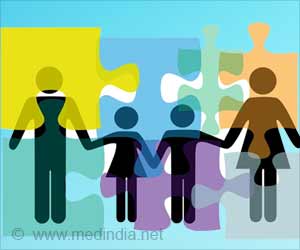Furthermore, the latest UNFPA report indicated that in India 25 percent of the population are children aged 0-14, 18 percent are children aged 10-19 and 26 percent are in the age group 10-19. 24 years. About 68 percent are in the 15-64 age category, while those over 65 are only 7 percent.
Advertisement
Exploring the latest demographic shift
On the other hand, China has about 17 percent of the population under the age of 14, 12 percent in the 10-19 age group and 18 percent in the 10-24 age group.
While 69 percent are in the 15-64 age category, about 14 percent or nearly 200 million people are over 65.
However, China is doing better than India in the context of Life expectancy, which in the case of women is 82 and 76 for men. The figures for India are 74 and 71, according to the report.
“The results of the Indian survey suggest that public anxiety has trickled down to a large part of the general public,” Andrea Wojnar, UNFPA India representative, said in a statement.
“However, population figures should not cause anxiety or create alarm. Instead, they should be seen as a symbol of progress, development and aspirations if individual rights and choices are respected,” he said.
Meanwhile, the report also highlighted the problems of diminishing women’s right to bodily autonomy.
Analysis of the new world population figures
The SWOP report noted that 44 per cent of women and girls in partnership in 68 reporting countries do not have the right to make informed decisions about their bodies. in matters of sex, contraception and seeking medical attention. About 257 million women around the world have an unmet need for safe and reliable contraception.
“Many women lack control over their bodies, including the right to have children, to decide when and how many to have them,” Poonam Muttreja, executive director of the Population Foundation of India, said in a statement.
According to the fifth round of the National Family Health Survey (2019-21), The unmet need for contraceptives in India is 9.4 percent, indicating that even when couples want to adopt a contraceptive method, it is not available to them.
In addition, early and forced marriages continue to occur: almost one in four women in India marries before the age of 18. A Family and social norms have pushed women into marriage and motherhood, leaving them with no other option.
“Even as India becomes the world’s most populous country, the programmatic discourse must focus on ensuring that comprehensive and equitable services are available to people, regardless of where they live or to what strata of society they belong. At the same time, we need to make sure that girls and women are not pushed into early marriages and pregnancies, limiting their aspirations,” added Muttreja.
The UNFPA report recommends that governments should create policies with “gender equality and rights at the center, such as parental leave programmes, child tax credits, policies that promote gender equality in the workplace and access universal access to sexual and reproductive health and rights.
Source: IANS
